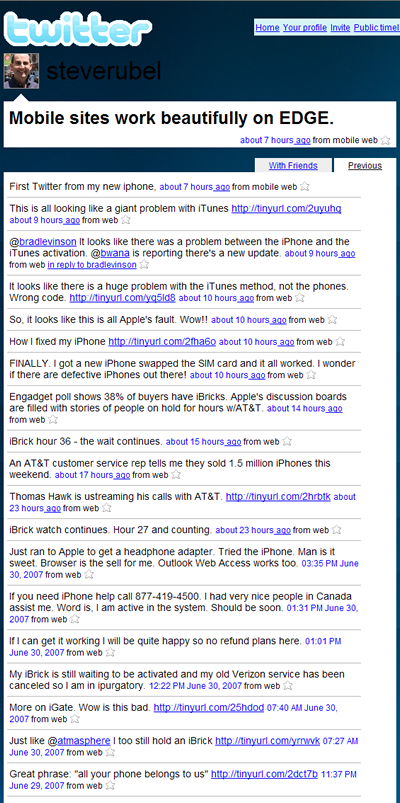It was announced on Wednesday that a new type of digital billboard, Spectacolor HD, will be capable of presenting dazzling video and graphics. But eye candy is as cheap and ephemeral as the name implies. Where is the power to really engage a consumer? I got my answer in the fleeting, fifth paragraph of this BrandWeek article:
The Spectacolor HD board also promises to take the transformation of the outdoor medium one step further to engage the consumer through interactive features. Using mobile phones, passersby will be able to listen to audio for the board, play games on the screen, send text messages or download audio and video files.
Those who visit DigitalSolid regularly know that I get particularly excited by the prospect of ads with a mobile phone component. In prior posts I’ve discussed the direct marketing implications of standard digital ads, as well as the print-to-mobile promise of ShopText.
So you know my priorities.
I believe the news about Spectacolor HD that will have the biggest impact on us marketing technology types is the ability to push content to consumers for them to keep and share. As with the other examples I’ve discussed, this will truly use all of the marketing power of a digital ad.
How would it harness this marketing power? Well, what if, from this billboard, you could download a podcast to your cell phone — for instance, a song with a branding element or offer presented at the end, or a walking tour narrative? Or even a “treasure hunt” set of instructions? (Think Geocaching — a fast growing hobby for the GPS enabled.)
This would give your brand a tremendous amount of bang for the buck. It could be listened to multiple times and shared with others who haven’t seen the digital billboard. This is huge if the campaign is properly crafted.
But the billboard being discussed in the BrandWeek article is an exotic, rarefied animal. It will go up in New York City’s Times Square, at 47th Street and Broadway.
Most digital billboards will be on the sides of teeming freeways, where viewing time is brief, and the opportunity to download something, based on the range that Bluetooth grants you, is minimal indeed. Too bad there isn’t a way to pass information to a more far-flung group — a group of people who must stand still long enough to receive it.
Yours Free To Download (Just Wash Your Hands First, Please)
Should the meme of downloading from digital ads become more commonplace, I know of just such an audience. They are standing as I type this, gazing at digital ads all over America. I’m referring to the men in public restrooms equipped with digital, ad-serving monitors.
These units have always struck me as too clever by half. For one thing, they are positioned on the wall above a urinal mere inches from the viewer’s nose (I hope!). That makes ignoring the ads it flashes all but impossible, but it makes focusing on said ads just as difficult. And these ads have never promised me anything of value.
What if these same monitors were equipped to send the people in the restroom (hopefully after they’ve washed up!) the same goodies that were heretofore only available to New York tourists?Â
Once you’ve stopped chuckling, think about the valuable mobile marketing you could accomplish by designing and executing a campaign that people receive by using any cellphone equipped with both Bluetooth and an MP3 player. It’s not so farfetched a future to imagine.
Ironically, these audio media may be delivered by a digital display ad. In an odd way this makes perfect sense.
And hopefully, by the time all the other moving parts are in place to make this advertising feasible, there will be more types of public spaces available where digital ads are displayed.
In the future, I would hope these campaigns wouldn’t be relegated to the type of room polite people excuse themselves to visit.
